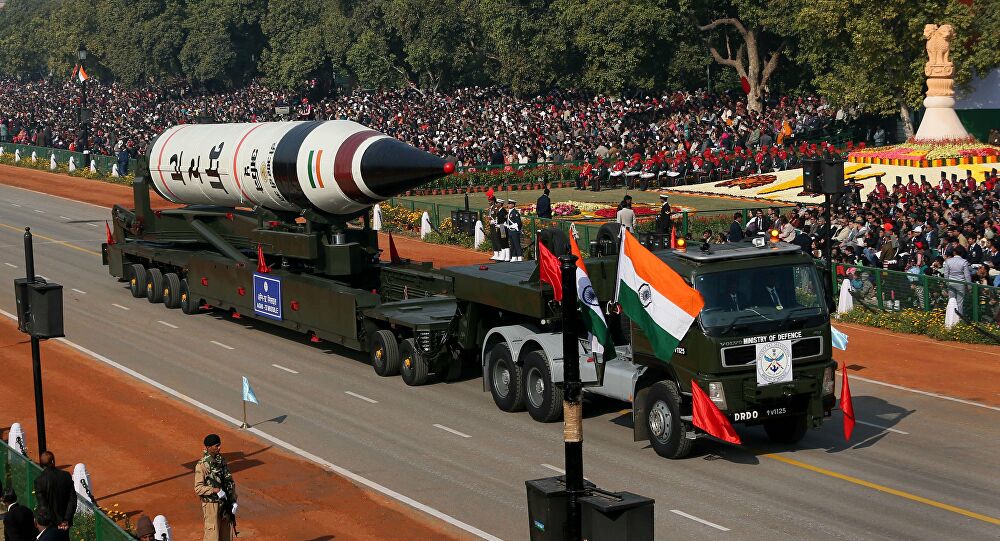
New Delhi: The race for nuclear arsenal supremacy has not declined with nuclear weapon states, including Russia and the USA deploying more and more warheads operationally. India with nearly 156 nuclear warheads lags behind its arch rivals China and Pakistan.
At present, China has more than 350 warheads. Pakistan is ahead of India with more than 165 nuclear weapons at the beginning of this year as per the annual report released by Stockholm International Peace Research Institute (SIPRI).
At the start of last year, while India had 150 warheads, Pakistan had 160 and China had 320, the SIPRI report noted. It said nearly all the countries have started rapid modernisation of its nuclear weapon inventory. “China is in the middle of a significant modernisation and expansion of its nuclear weapon inventory, and India and Pakistan also appear to be expanding their nuclear arsenals,” it said.
There are nine nuclear weapon states in the world, including India, USA, Pakistan, China, Russia, France, United Kingdom, Israel and the Democratic People’s Republic of Korea (North Korea).
In its SIPRI yearbook 2021, the report said despite an overall decrease in the number of nuclear warheads in 2020, more have been deployed with operational forces. The report assessed the current state of armaments, disarmament and international security.
The nine countries had an estimated 13,080 nuclear weapons at the start of 2021. This marked a decrease from the 13,400 that the SIPRI estimated these states possessed at the beginning of 2020, the report said.
Drawing a distinction between deployed warheads and other warheads, the report said deployed refers to warheads placed on missiles or located on bases with operational forces. On the other hand, other warheads’ refers to stored or reserve warheads and retired warheads awaiting dismantlement.
Despite this overall decrease, the estimated number of nuclear weapons currently deployed with operational forces increased to 3,825, from 3,720 last year. Moreover, around 2,000 of these – nearly all of which belonged to Russia or the USA – were kept in a state of high operational alert, it noted.
While the USA and Russia continued to reduce their overall nuclear weapon inventories by dismantling retired warheads in 2020, both are estimated to have had around 50 more nuclear warheads in operational deployment at the start of 2021 than a year earlier.
Russia also increased its overall military nuclear stockpile by around 180 warheads, mainly due to deployment of more multi-warhead land-based intercontinental ballistic missiles (ICBMs) and sea-launched ballistic missiles (SLBMs).
Also, both countries’ deployed strategic nuclear forces remained within the limits set by the 2010 Treaty on Measures for the Further Reduction and Limitation of Strategic Offensive Arms (New START), although the treaty does not limit total nuclear warhead inventories.
“The overall number of warheads in global military stockpiles now appears to be increasing, a worrisome sign that the declining trend that has characterised global nuclear arsenals since the end of the cold war has stalled,” said Hans M Kristensen, Associate Senior Fellow with SIPRI’s Nuclear Disarmament, Arms Control and Non-proliferation Programme and Director of the Nuclear Information Project at the Federation of American Scientists (FAS).
Russia and the USA together possess over 90 per cent of global nuclear weapons. Both have extensive and expensive programmes under way to replace and modernise their nuclear warheads, missile and aircraft delivery systems, and production facilities.
“Both Russia and the USA appear to be increasing the importance they attribute to nuclear weapons in their national security strategies,” Kristensen said.
All the other seven nuclear-armed states are also either developing or deploying new weapon systems or have announced their intention to do so. The UK’s “Integrated Review of Security, Defence, Development and Foreign Policy”, published in early 2021, reversed a policy of reducing the country’s nuclear arsenal and raised its planned ceiling for nuclear weapons from 180 to 260.
North Korea continues to enhance its military nuclear programme as a central element of its national security strategy. While it conducted no nuclear test explosions or long-range ballistic missile tests during 2020, it continued production of fissile material and development of short- and long-range ballistic missiles.
“The entry into force of the Treaty on the Prohibition of Nuclear Weapons in early 2021 highlights the growing divide between the nuclear-armed states, which are all investing in the long-term future of their nuclear forces, and other countries that are impatient to see progress on nuclear disarmament promised by the Nuclear Non-Proliferation Treaty,” said Matt Korda, Associate Researcher with SIPRI’s Nuclear Disarmament, Arms Control and Non-proliferation Programme and Research Associate with the FAS Nuclear Information Project.








